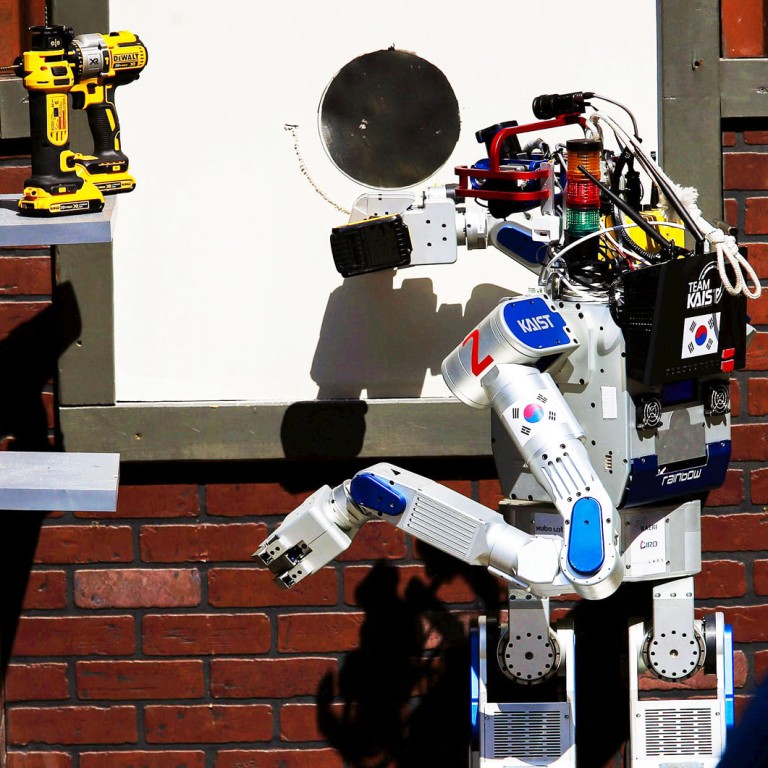
Hong Kong University's ‘Atlas’ looks lost as expensive robot flunks international competition
Controversy has flared up again over a HK$15 million (US$1.93 million) "Atlas" robot purchased from Boston Dynamics by the University of Hong Kong after it flunked an international competition last weekend.
Controversy has flared up again over a HK$15 million (US$1.93 million) "Atlas" robot purchased from Boston Dynamics by the University of Hong Kong after it flunked an international competition last weekend.
The university failed to pick up any points at the Defence Advanced Research Projects Agency (DARPA) Robotics Challenge in California, where it finished last out of 23 teams made up of researchers and students. The agency operates under the United States Department of Defence.
The school’s faculty of engineering purchased the 1.9 metre Atlas robot from Boston Dynamics in 2013, a move that invited criticism from other faculty members over how funds were being allocated.
In March of this year, the South China Morning Post reported that some faculty were questioning why Atlas was purchased when the university had little expertise in robotics. They also called for greater transparency over the project’s budget.
“After spending so much, we came last. It’s bad. Whether buying that robot was wise is another matter, but I don’t think it was.” said Dr Cheung Sing-wai, associate professor at the university’s department of electrical and electronic engineering.
Cheung said the money could perhaps have been better spent in other research fields.
The university said its Advanced Robotics Initiative will continue its research as it aims to see its innovations used in manufacturing, healthcare and elderly care in Hong Kong and on the Chinese mainland. It also praised the merits of the competition.
“The HKU Advanced Robotics Initiative and the DARPA Robotics Challenge have created meaningful opportunities for students and researchers to think out-of-the-box and to be innovative but practical and pragmatic,” said a university spokeswoman.
The robotics challenge was designed in response to the Fukushima Daiichi nuclear disaster in 2011, when an earthquake-triggered tsunami caused several reactors at a plant in Japan to melt down.
The aim was to build and programme robots that can work in areas considered too dangerous for humans, due to radioactive material or other risks.
Competing robots were challenged to drive alone, turn valves, climb stairs and walk across rubble, among other tasks. If a robot fell over, the robotics team was not permitted to pick it up. It had to right itself.
Team Kaist from Daejeon in South Korea claimed the US$2 million award for first prize with its robot DRC-Hubo. Kaist, a public research university, is considered the country’s closest equivalent to the Massachusetts Institute of Technology (MIT) in the US.
The challenge marks “the beginning of a future in which robots can work alongside people to reduce the toll of disasters,” said DARPA director Arati Prabhakar.
Clips of several of the robots tumbling over as they attempted various tasks attracted thousands of views on YouTube, but spectators at the competition proved staunchly supportive despite the mishaps.
Although various fields of robotics are still in their early stages, robots have improved labour efficiency and will surely have greater applications for improving people’s lives in Hong Kong in the future, wrote John Tsang Chun-wah, Hong Kong’s financial secretary, on his blog.
“I believe that as the related technology gradually matures, costs are gradually reduced and the application of robots increases, we can improve productivity and even attract some manufacturing to return to Hong Kong,” Tsang wrote after watching the competition via live video-streaming.


